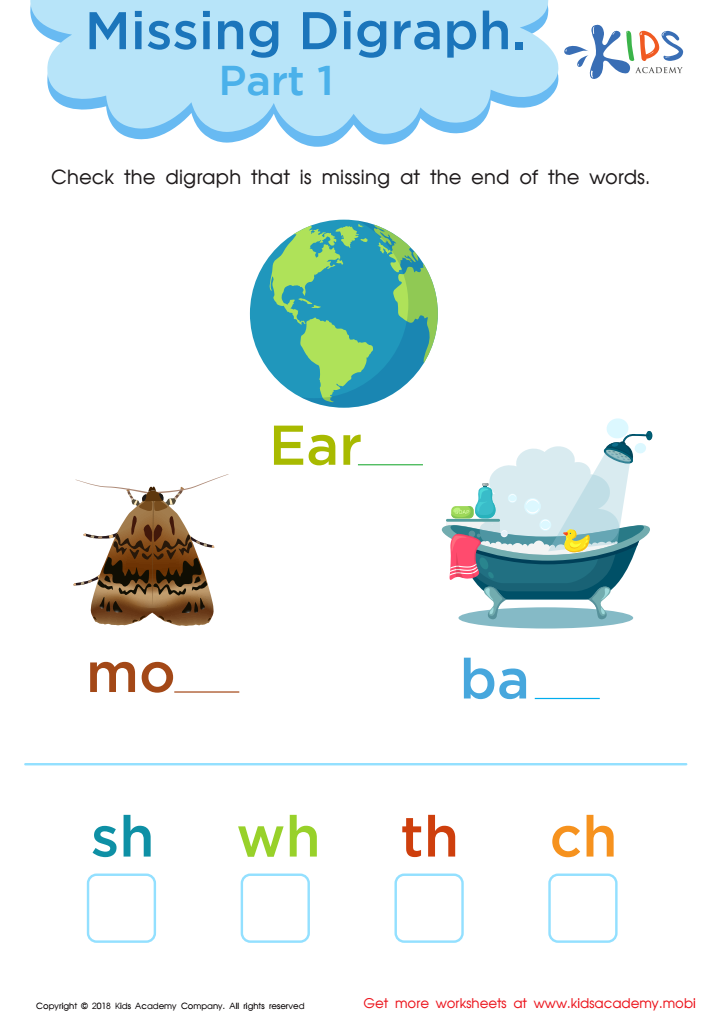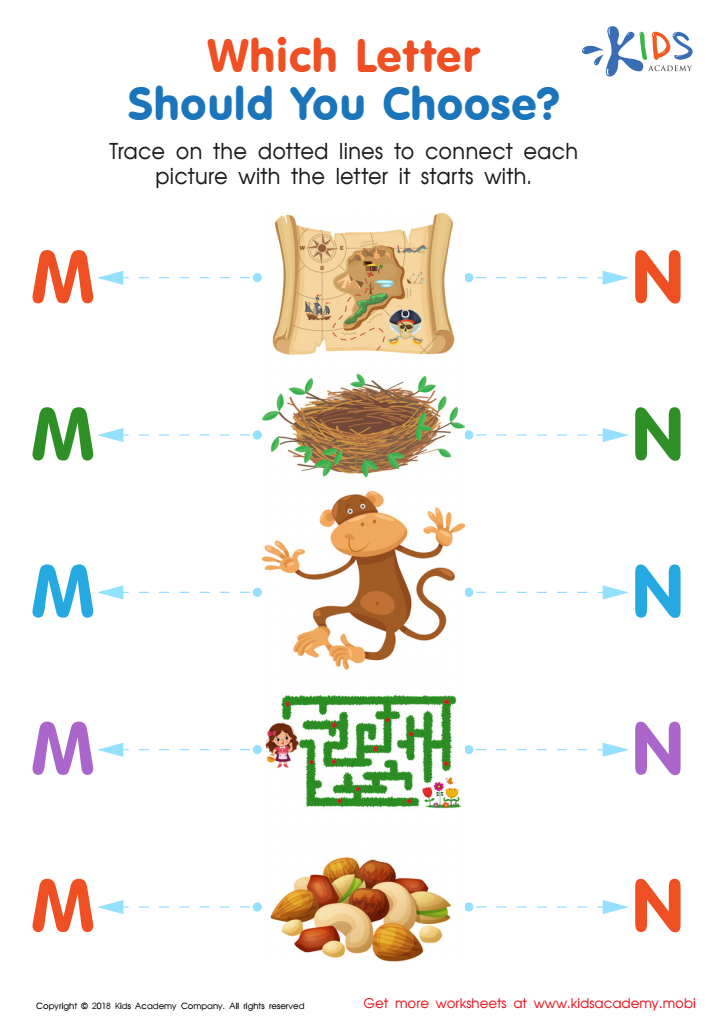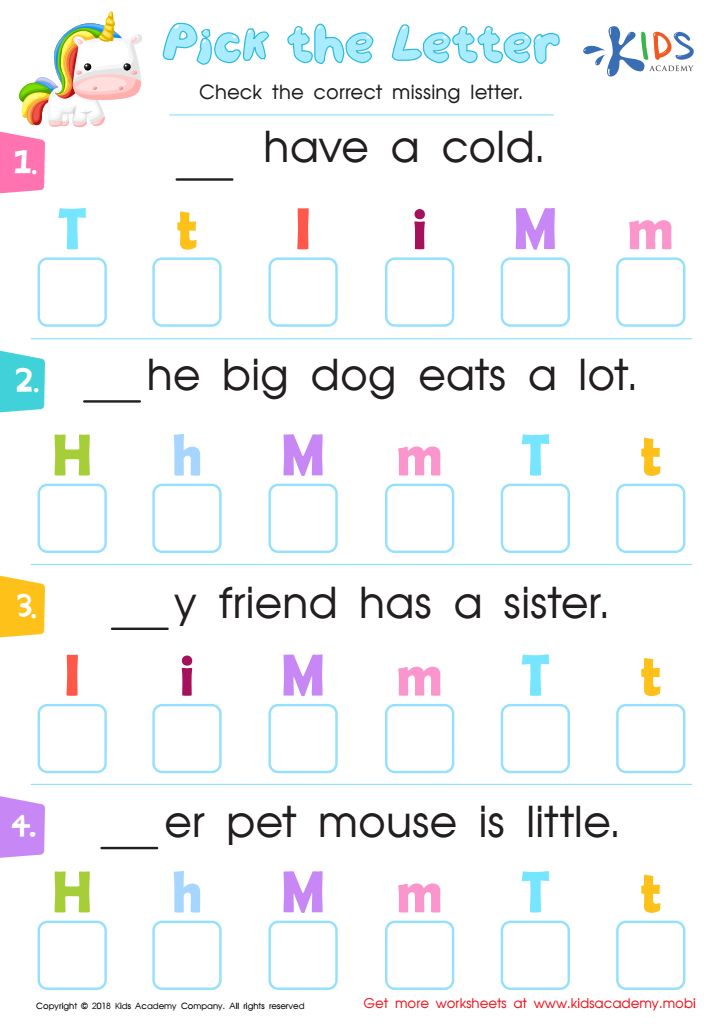Normal Missing Letters Worksheets for Ages 4-7
4 filtered results
-
From - To
Explore our exciting "Normal Missing Letters Worksheets" designed specifically for children ages 4-7! These engaging worksheets help young learners develop their literacy skills by recognizing and filling in missing letters to complete words. Perfect for improving alphabet knowledge, these activities promote phonemic awareness and boost spelling confidence. Featuring colorful visuals and age-appropriate themes, kids will love enhancing their learning while having fun! Whether used at home or in the classroom, these worksheets are a fantastic resource for early childhood education. Download our printable worksheets today and watch your child thrive as they rediscover the joy of learning through play!


Missing Digraph: Part 1 Worksheet


Which Letter Should you Choose? Worksheet


Pick the Letter Worksheet


Missing Digraph: Part 2 Worksheet
Normal Missing Letters activities are essential for children aged 4–7, as they directly contribute to early literacy development. During this formative phase, children are enhancing their phonemic awareness, letter recognition, and spelling skills. Engaging in tasks where they fill in missing letters helps strengthen their understanding of how words are structured, ultimately improving their reading and writing proficiency.
For parents and teachers, these activities provide a foundation for sounding out words and decoding text, which is crucial for reading fluency. Moreover, Normal Missing Letters exercises place emphasis on the connection between letters and sounds, enhancing children's ability to identify phonetic patterns and advance their vocabulary.
In addition, these activities are engaging and can be adapted to suit various learning styles. They can be done individually or in groups, fostering a collaborative learning environment. This not only aids in academic growth but also builds confidence in young learners.
Support for and involvement in these learning activities from parents and teachers creates a strong literacy foundation, ensuring children feel equipped and motivated as they embark on their educational journeys. Overall, Normal Missing Letters contribute significantly to developing essential skills necessary for lifelong learning.
 Assign to My Students
Assign to My Students













